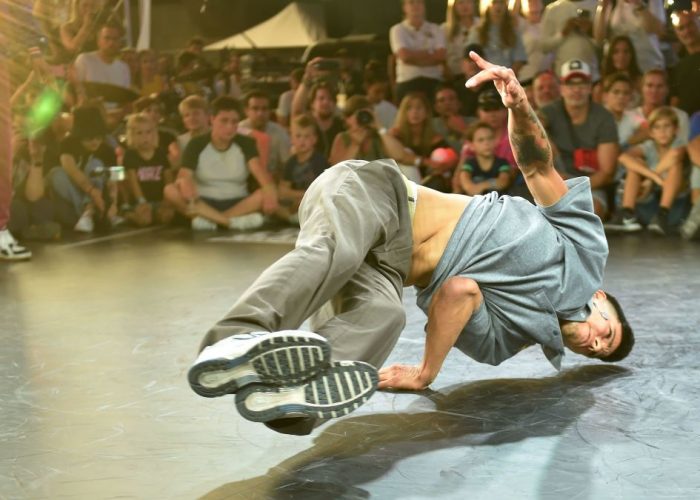The Olympics arent so much a monument to all sports across the globe as they are an evolving and arbitrary list of them. Rugby, for example, was featured prominently throughout the early 20th century but was discontinued in 1924, only to be reinstated for the 2016 Games in Rio de Janeiro. Despite a massive international presence and a big money professional league in the United States, Golf only featured twice in the Games before 2016. Baseball and softball were also Olympic sports from 1992 to 2012, only to be dropped in 2016 and then later reinstated for the forthcoming 2020 (or 2021) Games in Tokyo.
The newest sport to enjoy new Olympic spotlight is breakdancing, or as it will be referred to at the Games, breaking. Breakdancings Olympic debut is the product of the International Olympic Committees pursuit of urban events, meant to draw the attention of younger audiences.
Its a big moment for the sport, but breakdancers might want to temper their expectations: The shelf life of some Olympic sports feels pretty finite, or at least subject to the whims of the all-powerful chopping block of the IOC: With its 90 members, the IOC is a big, nebulous organizing body that decides which sports are included in the Olympics. Its the gatekeeper to the most prestigious global sporting event in the world (besides, perhaps, the World Cup), and dictates exactly what events you see on TV. To be included in the Games, a sport must be more than popular, and fit the IOCs fancy in multiple ways.
Heres how breakdancings journey to the Olympics played out, based on how the process works in general.
Sports must advocate for themselves
It might not be evident when youre watching tennis or soccer, but many sports have international federations, and many have Olympic organizing committees. In order to gain inclusion, a sports international federation must appeal to the IOCs Olympic Program Commission with a detailed proposal. Convincing the IOC of a sports worthiness hinges on a few criteria, some of whichsuch as popularity with global youth and business prospectsare weighted more heavily than others in certain circumstances.
As a 2016 Forbes article explains:
The federations fill out questionnaires that can run 100 pages long with information on gender equity, global participation and passion by fans as measured by TV audiences, social media, event attendance and more. The cost of venues to hold the sports is also a consideration with the IOC looking to avoid the white elephants left by the 2004 Games in Greece. Skateboarding and sports climbing in Tokyo will be held in temporary venues in urban settings.
There are ultimately five categories the IOC considers when determining a sports potential value, as Leigh Robinson, Dean of the Faculty of Sport at Scotlands University of Stirling, writes for The Conversation:
Olympic proposal: history of the sport, whether it has been included in the programme before, the number of affiliated national federations and the level of participation in world or continental championships.
Institutional matters: financial status of the sport, its governance, gender equity and strategic planning.
Value added to the Olympic movement: the sports image and whether it represents Olympic values.
Popularity: how many spectators it will draw, sponsorship, media interest and whether the best athletes will compete at the Olympics.
Business model: the income the sport generates, the costs of staging the sport and its financial status.
If youre getting the picture, this is purely a matter of lobbying. Much of a sports chances for inclusion hinges on impressing the IOC, and that can include glad-handing at ritzy events.
The Olympics have projected a more youthful image lately, owing largely to the inclusion of sports such as skateboarding, surfing, snowboarding, BMX and now breakdancing. Thats totally deliberateall of these sports a have youthful, energetic appeal and global popularity, so its no surprise the IOC was keen on their inclusion.
Once the IOCs Executive Board approves a sport, the process is finally cemented.
Sports do not last forever
Some general sports categories are deeply woven into the Olympics fabric. Could you imagine an Olympics with no swimming, track, or gymnastics? But others, some of which even seem inextricable from the Games, are cut loose on occasion.
In 2013, the IOC announced that it was nixing wrestling, sparking uproar and shock from the sports community. An advocacy campaign eventually prompted the IOC to reinstate the sport, but others often arent as lucky.
The Olympic Program has 25 core sports, which include basketball, cycling, and tennis, among other staples. Others have been cut over the years due to a variety of reasons, some of them seemingly more arbitrary than others. Baseball was ousted because most professional players dont consider the Olympics a worthy competitor to the Major Leagues. Soccerwhich is a much more global economic engine than baseballremains, despite the worlds best players shunning the Olympics because it pales in comparison to the World Cup, and even their domestic professional competitions.
While you can always count on seeing the traditional core take center stage at the Olympics, you can expect the revolving door to usher in new sports every now and then. The longevity of breakdancing will likely depend on viewership of Olympic broadcasts and how much they inspire a new generation of athletes to take up the sport.read more
How Did Breakdancing Become an Olympic Sport?


